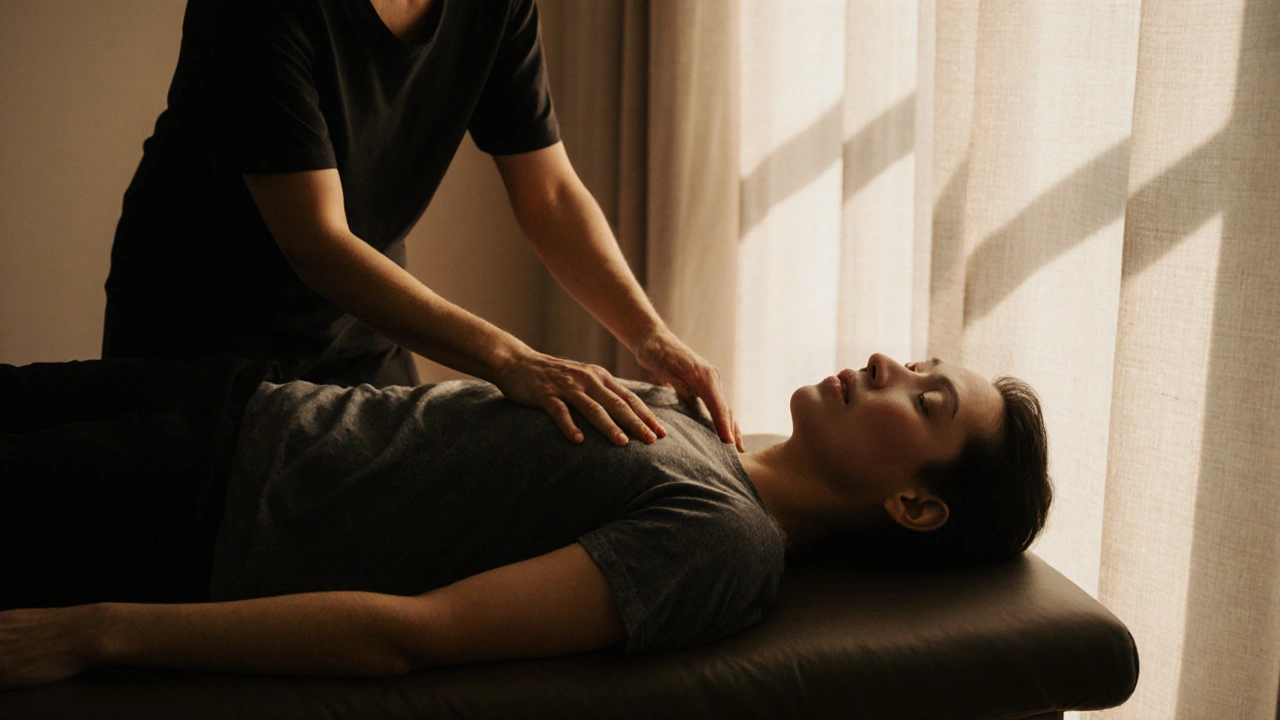Natural Therapy: Gentle, Real Ways to Feel Better
Natural therapy uses simple body-based methods to reduce pain, calm stress, and improve daily function. You can try massage styles, movement methods, and hands-on bodywork that focus on natural healing without heavy meds. This page collects practical options—what they feel like, who they help, and quick tips to know before you book a session.
Start by picking one clear goal: reduce pain, relax, fix posture, or boost recovery. Different natural therapies aim at different goals. For tight muscles or knots try trigger point work or warm stone massage. For chronic pain that needs gentle care check Ortho-Bionomy or Feldenkrais. For stress and mood, try polarity therapy, Amma, or healing touch.
What to expect in a session
Most sessions last 45–90 minutes and start with a short chat about your history and goals. Therapists use hands-on touch, guided movement, or light stretches. You might feel relief during the session, or slow changes over weeks. Bring loose clothes for movement-based sessions and be ready to describe any painful spots clearly.
Ask these quick questions before booking: Is the therapist trained in this method? How many sessions do people usually need for my issue? Do I need medical clearance first? Good therapists explain what they will do and why, and they adjust pressure and techniques to your comfort.
Simple home practices that help
Small daily moves add up. Try gentle stretching tied to your breathing for five minutes each morning. Use self-massage or a tennis ball on tight areas after a workout. For stress, teach yourself a 2-minute acupressure routine: press the area between your eyebrows, then the base of your skull, then the web between thumb and index finger. These steps are safe for most people and complement professional sessions.
Some therapies on this site worth trying: hilot and Lomi Lomi for relaxing, culturally rooted bodywork; Feldenkrais for better movement and posture; Hellerwork and Rolfing for structural alignment; cupping and stone therapy for circulation and warmth. If you have chronic conditions, ask your doctor first and choose gentle options like palliative massage or Ortho-Bionomy.
How to pick a therapist: look for clear training, client reviews, and a short consult before the first session. Trust your gut—if the therapist rushes or ignores pain signals, walk away. Good practitioners listen, explain, and make a simple plan you understand.
Natural therapy works best when combined with small lifestyle changes: better sleep, consistent movement, and less screen time. Start with one approach, track how you feel for two weeks, and adjust. You don’t need everything at once—pick one practical step and build from there.
Budget and frequency tips: many people see benefits after 3–6 sessions, but some notice change after one. Consider a short plan: two sessions in week one, then one per week for a month. Check prices ahead and ask if the therapist offers sliding scale. If travel or mobility is an issue, ask about home visits or guided self-care routines you can follow between sessions.

Ortho-Bionomy: The Ultimate Solution for Stress and Pain
Ortho-Bionomy is a gentle, non-invasive therapy that helps relieve chronic pain and stress by working with your body's natural reflexes-not against them. No force, no pressure, just quiet movement that tells your nervous system it's safe to relax.

Unlock Health: The Power of Acupressure for Wellness and Balance
Discover how acupressure can boost wellness, offering pain relief, stress reduction, and more. Get practical tips and learn fascinating facts in this deep dive.
Categories
- Health and Wellness (148)
- Alternative Therapies (86)
- Massage Therapy (40)
- Travel and Culture (15)
- Beauty and Skincare (9)
- Holistic Health (8)
- Health and Fitness (5)
- Spirituality (5)
- Other (2)
- Personal Development (2)
Popular Articles



